So where was I going when I visited the new bus terminal in Tokyo that I mentioned in my last post?
My primary intention had been to visit the art island of Naoshima, which is only about an hour by train followed by a 20-minute ferry.
However, I had also come with the goal of visiting the city of Okayama, Japan itself, which is a better place to stay for tourists wishing to visit Naoshima than trying to stay on Naoshima itself. After visiting Naoshima, I realized that there are very few dining options and everywhere requires cycling or taking a bus to get around the island. Okayama, in addition to having a long and fascinating history, also has plenty of restaurants to choose from and lots of cozy places to stay. It is also easily accessible by high-speed bullet train or multiple train and bus lines.
Here are my top 5 recommendations when visiting this charming city:
1. Koraku-en Garden
This garden is about a 5–10 minute taxi ride from Okayama station and is said to be one of the “Three Great Gardens” in Japan (the other two are Kenroku-en in Kanazawa and Kairaku-en in Mito). Koraku-en, which means “garden of pleasure after”, is a reference to a Confucius saying—explaining that a wise ruler must attend to the needs of his subjects first, and only then consider his own interests. Perhaps it was with this saying in mind that feudal lord Ikeda Tsunamasa ordered his vassal Tsuda Nagatada to begin construction of Koraku-en in 1687, with the project being completed in 1700. For many years, the garden was a place for entertaining important guests and also served as a retreat for various feudal lords, but in 1884, ownership of Koraku-en was transferred to Okayama Prefecture and the garden was opened to the public.
Koraku-en suffered severe flooding in 1934, and was bombed in 1945 during World War II. However, Koraku-en Garden today has been restored based on Edo Period paintings and diagrams and has retained its original appearance from 1700 for the most part.
The garden provides some great views of neighboring Okayama castle, boasts two large ponds for spotting visitors posing for wedding photos, and even a bamboo grove, iris garden, and tea plantation. Climb to the top of Yuishinzan Hill for a perfect view over Sawa-no-ike (pond). Sit down on one of the garden’s many benches with some green tea and kibi dango (吉備団子), a local sweet snack made of glutinous rice, starch, syrup, and sugar named for a famous Japanese legend (more on that below).
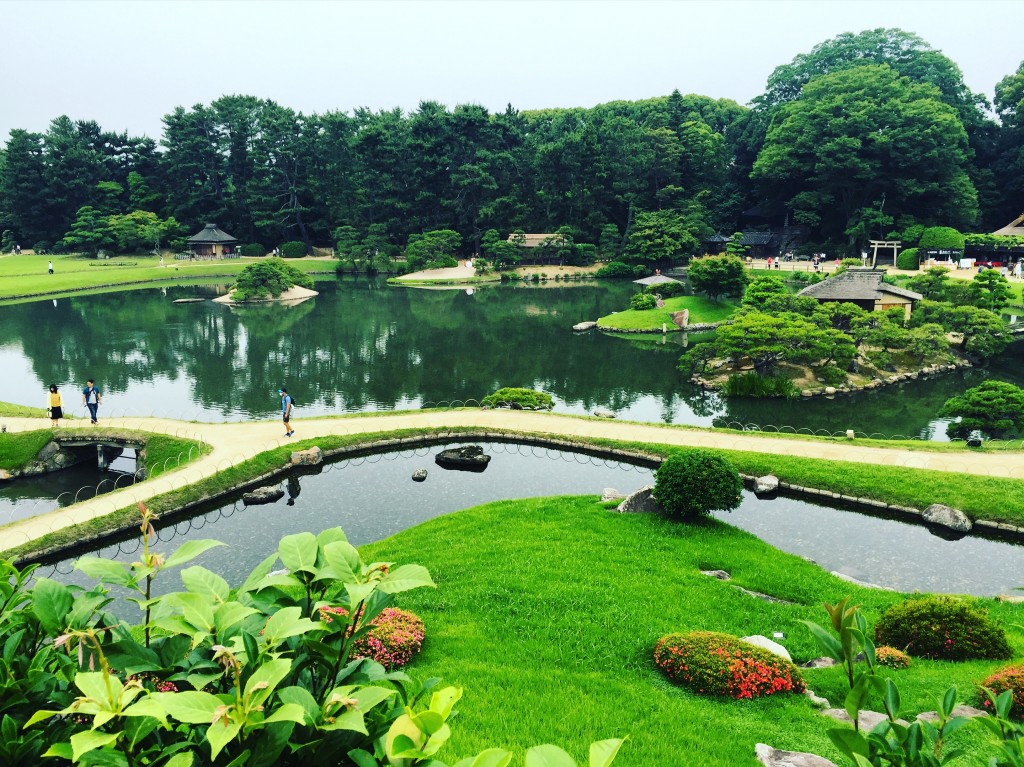
The view from Yuizishan Hill in Koraku-en Garden
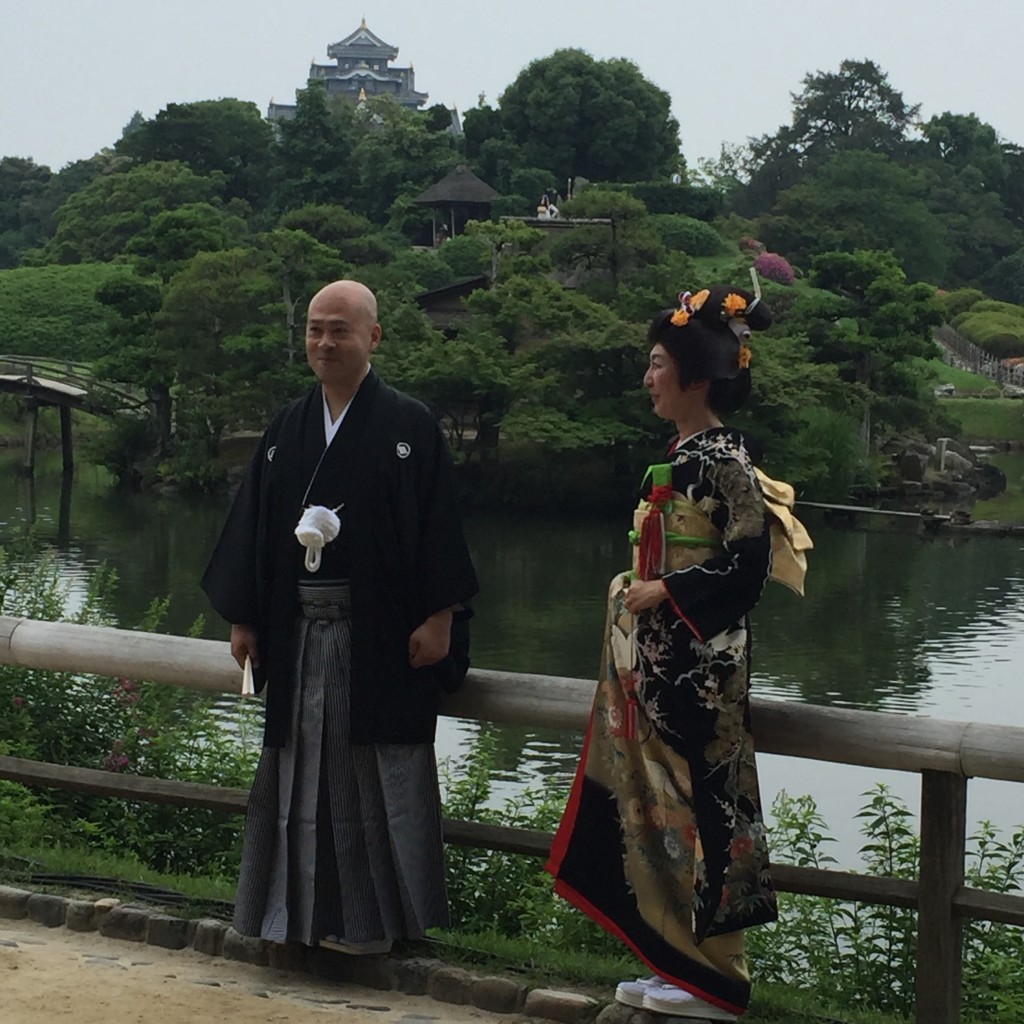
Like I said, couples taking wedding photos…cute!
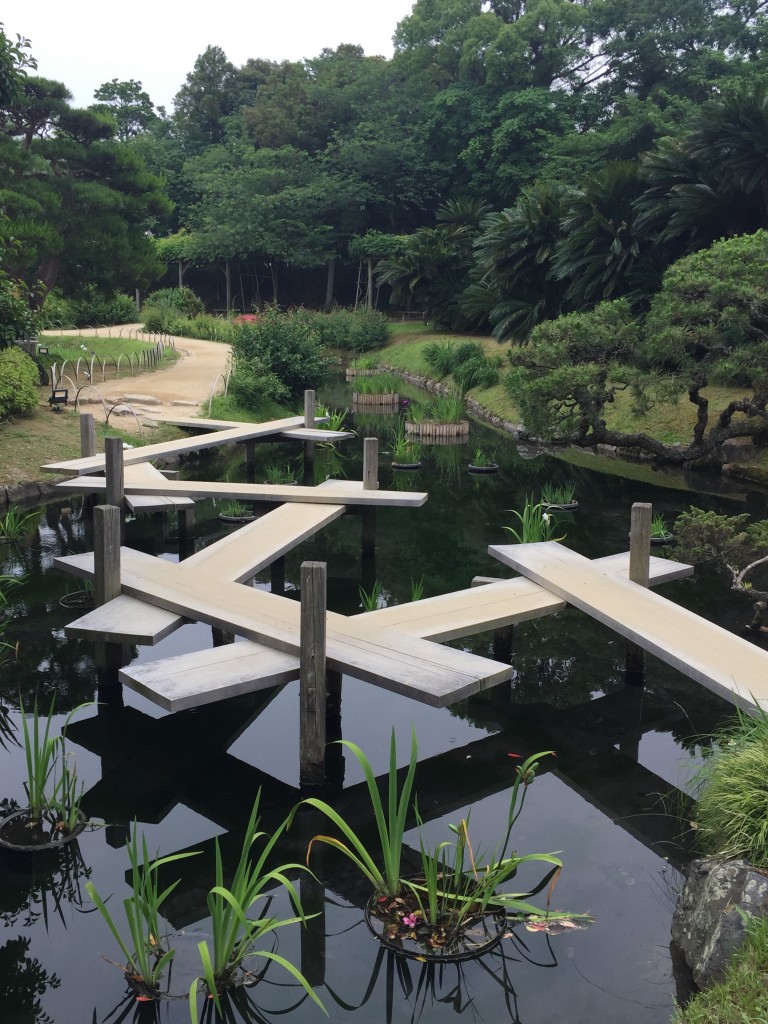
I absolutely love these little bridges in Japanese gardens. I loved the shape of this in Koraku-en
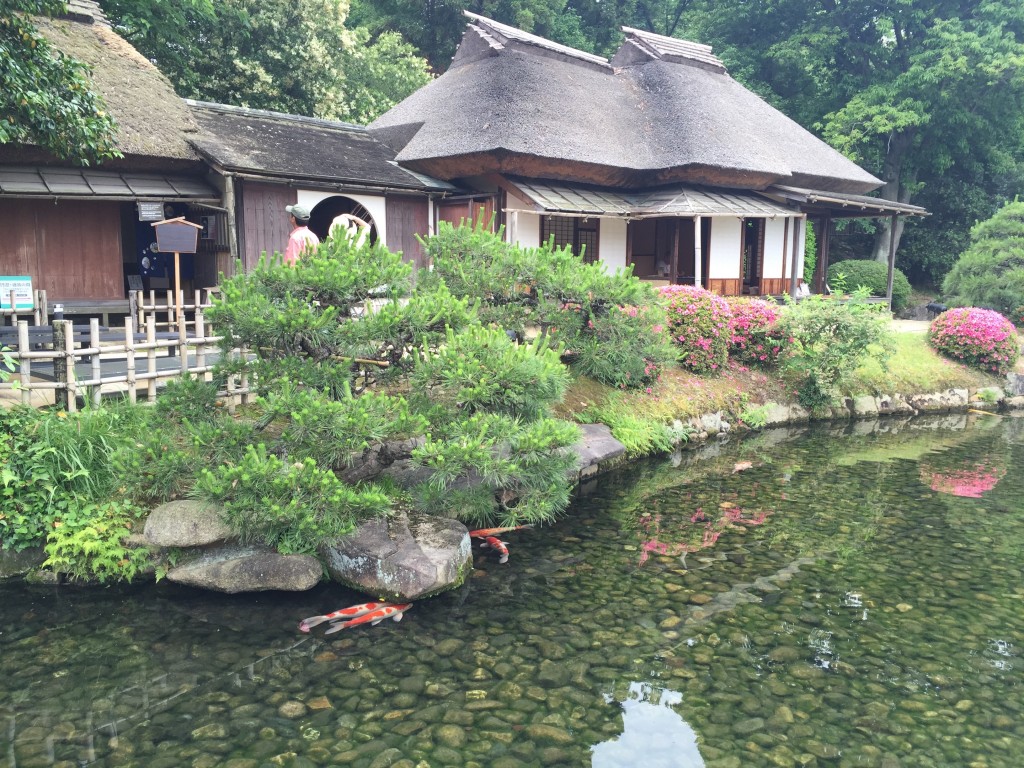
A quiet set of shops within Koraku-en
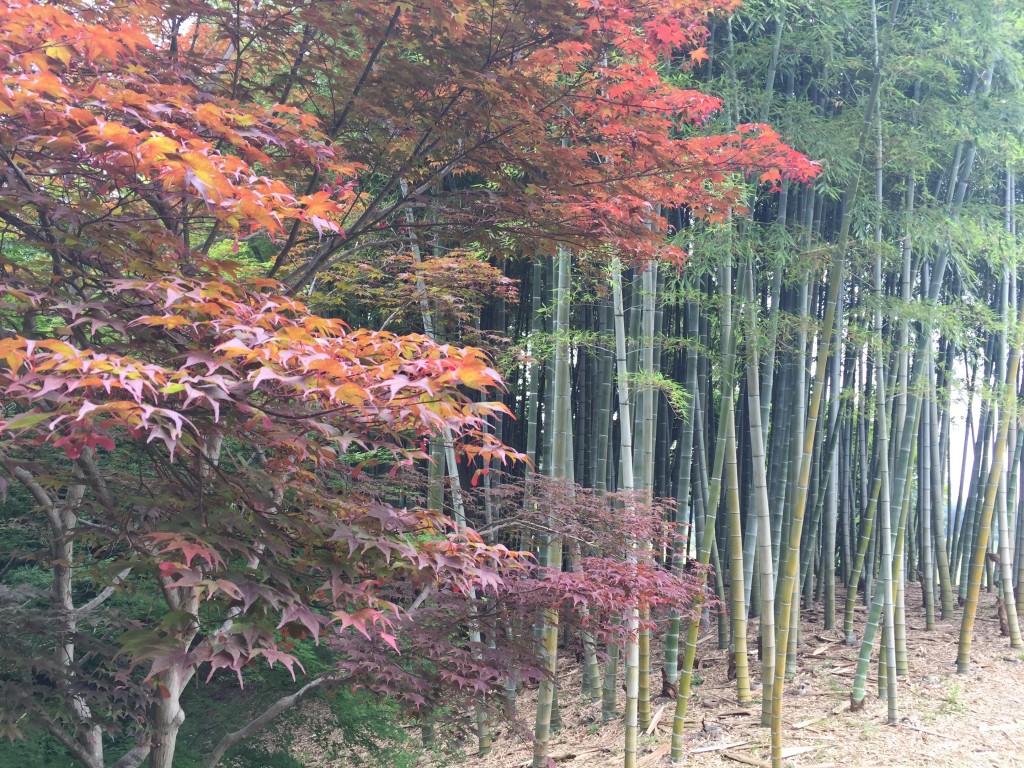
Finding peace and reflection in Koraku-en
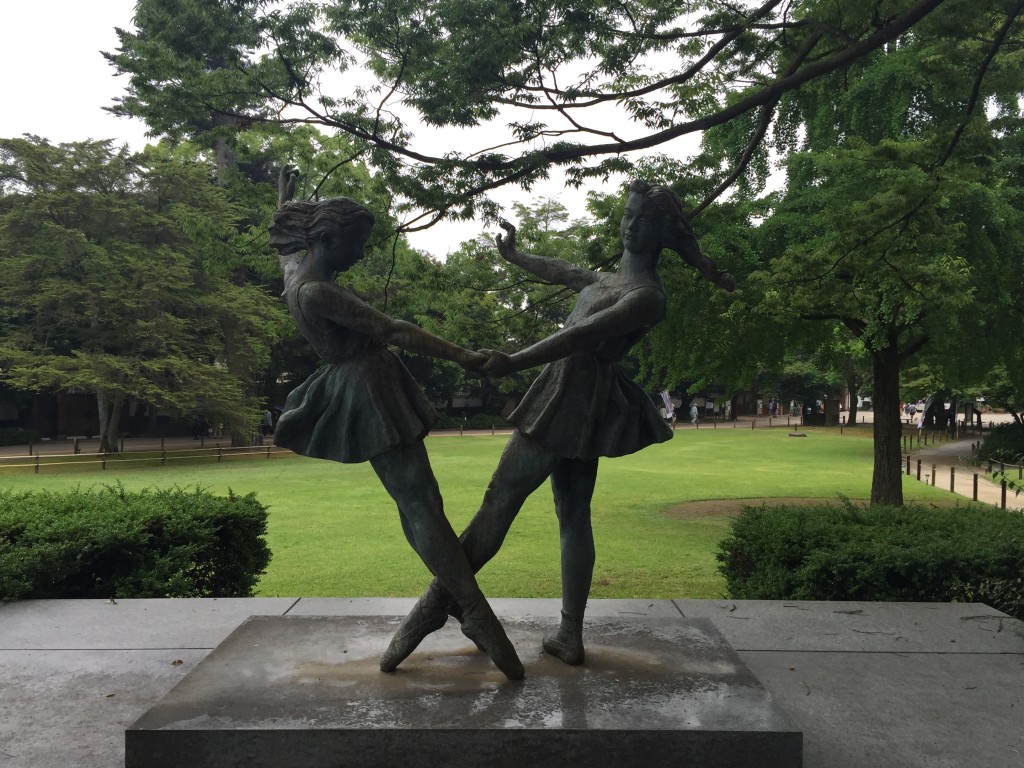
Lovely statue at the entrance to Koraku-en
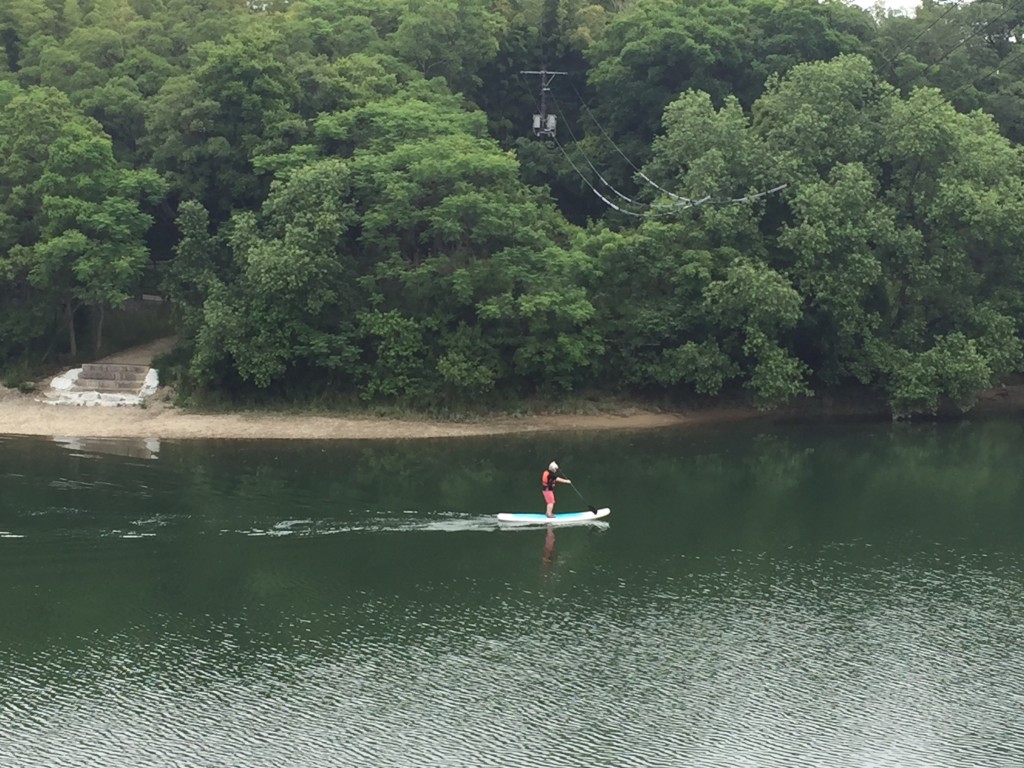
A lone warrior relaxing on the Asahi River, seen just past the bridge linking Koraku-en with Okayama Castle
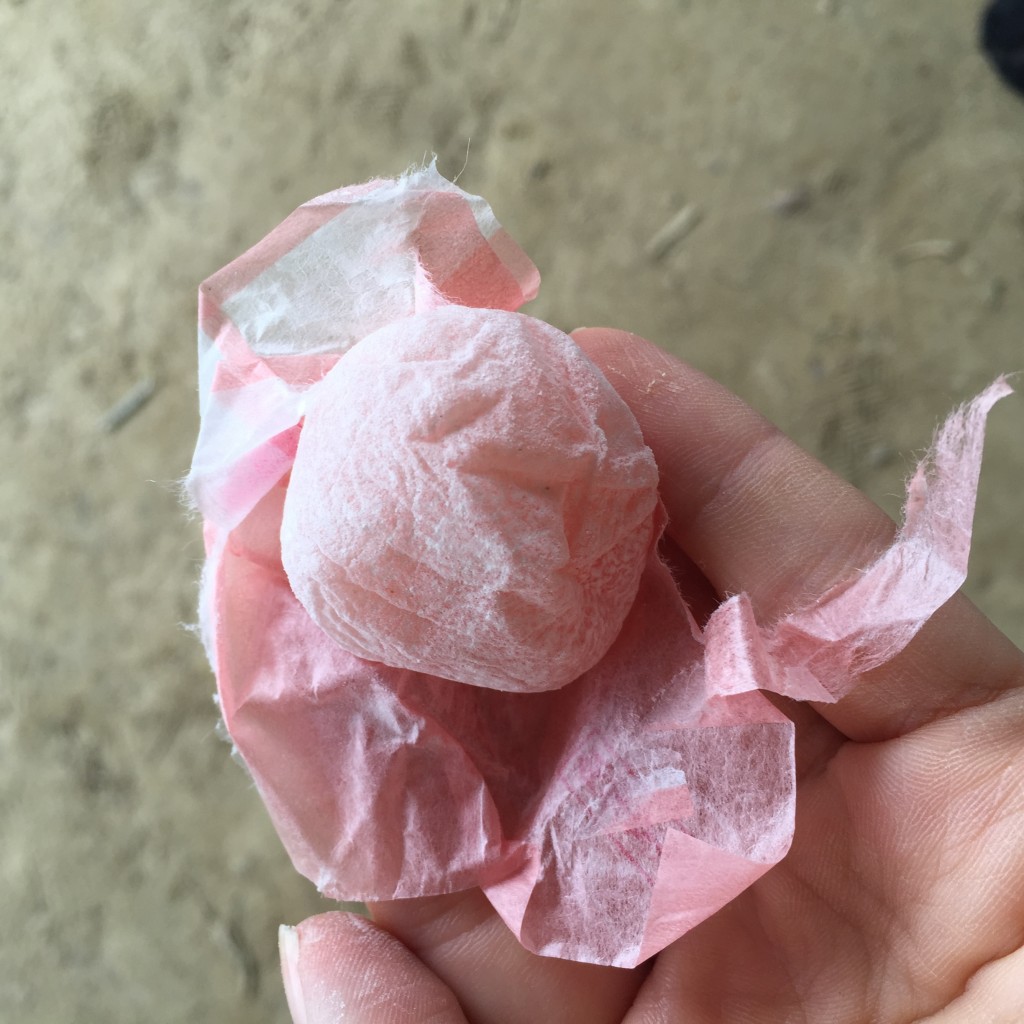
Kibi dango—I tried the white peach flavor first – so delicious!
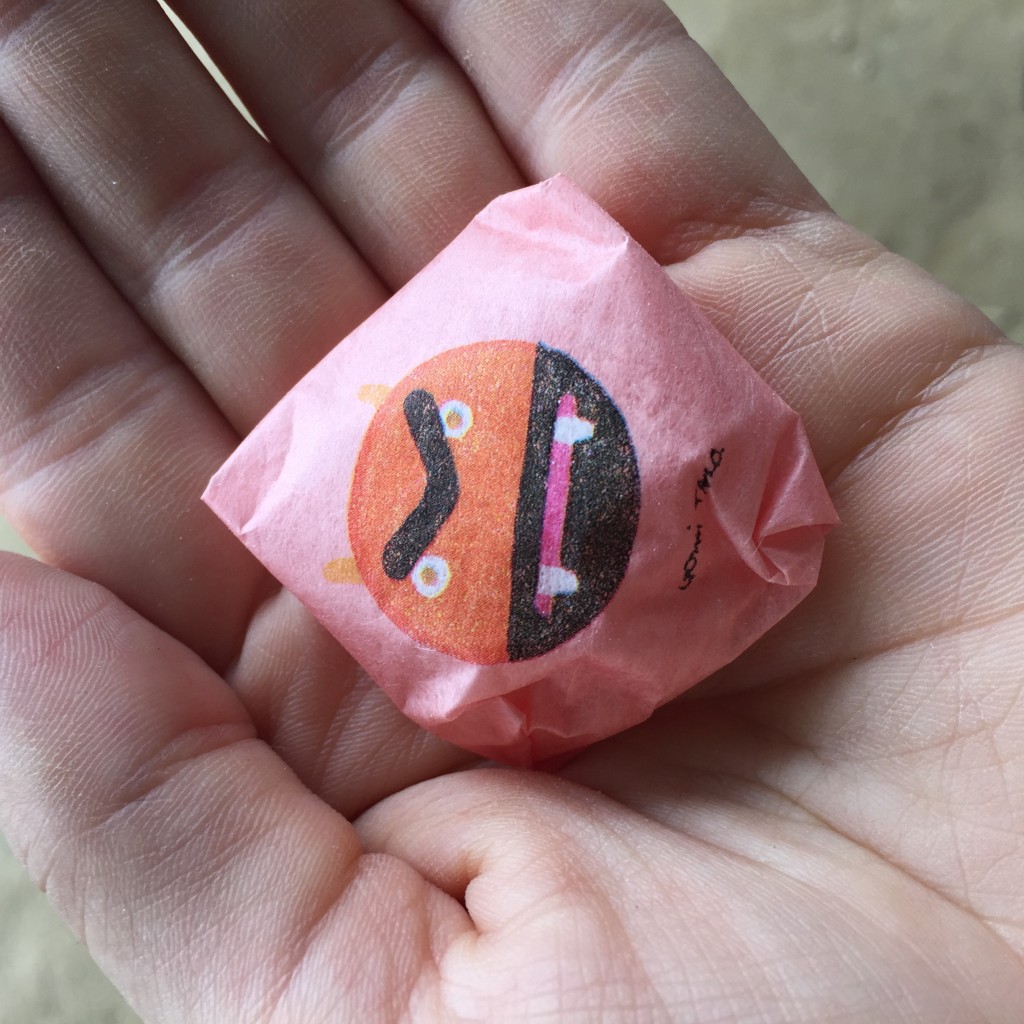
Staring down at a demon, known in Japanese as “oni”
2. Okayama Castle
It was hard not to visit this intriguing looking black castle (known as the “crow castle) after getting such lovely views of it from Koraku-en across the Asahi River. The castle was originally built in 1597 but was destroyed in the last year of World War II, with a reconstruction successfully completed in 1966. The castle is a three-tiered structure with six floors and admission is 300 yen or can be purchased in combination with entrance to Koraku-en for 560 yen.
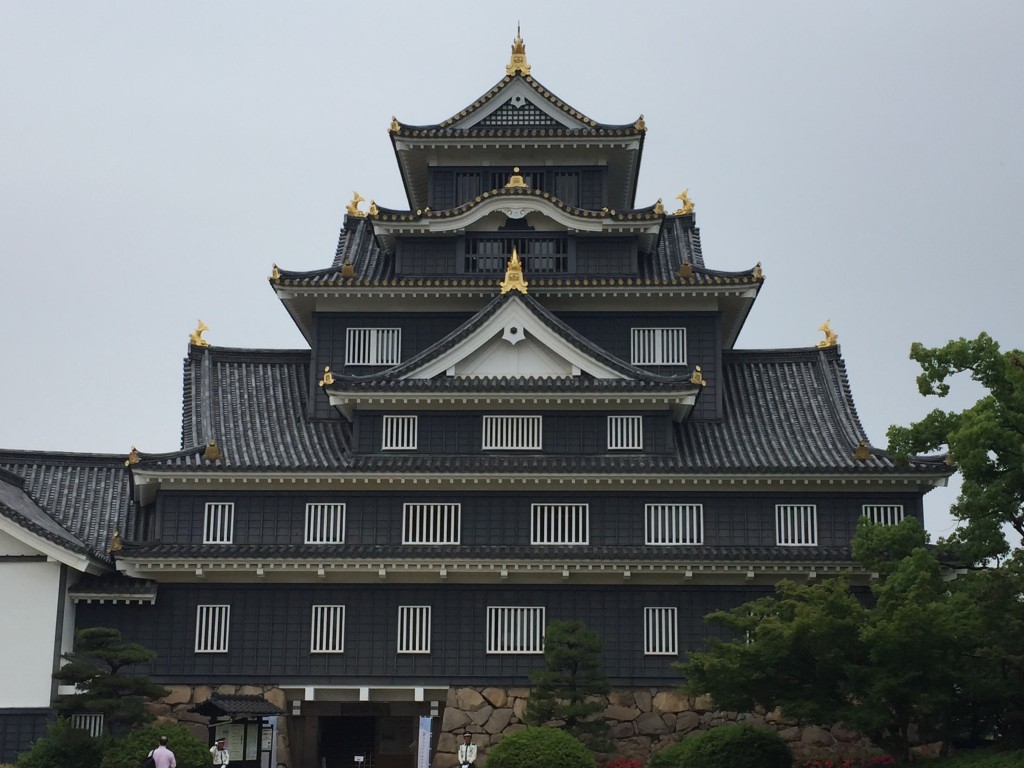
Okayama Castle – nicknamed the Crow Castle for a reason
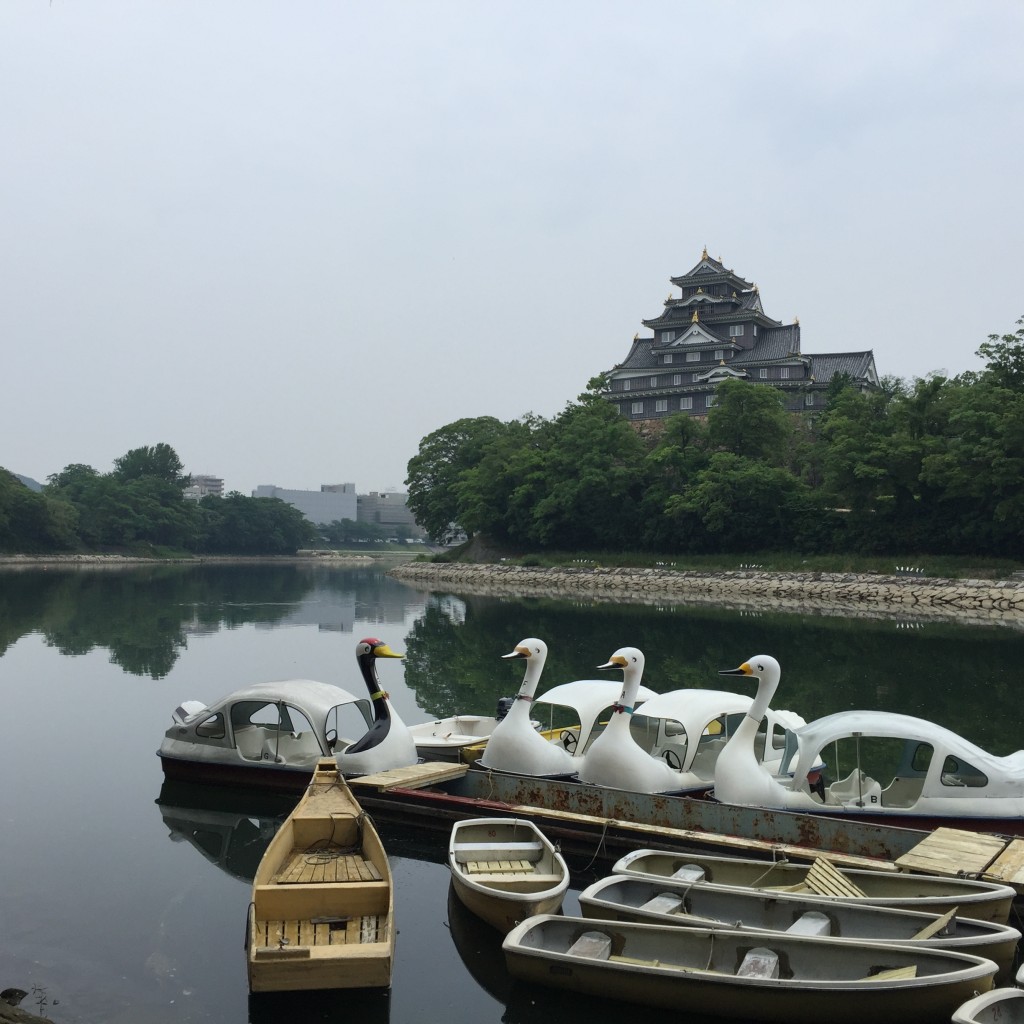
What do you suppose these swans are saying to each other?
I found myself intrigued with the one remaining original building that escaped destruction from the war, the Tsukimi Yagura (“moon viewing turret”), which dates back to 1620. The upper levels of this building in the northwest corner of the castle grounds served as watch towers while part of the second floor includes a veranda with shutters, which allowed the palace to enjoy viewing the moon and the seasons.
There are honestly not many English signs within the castle itself, but there is a chance for men and women to dress like a local lord or princess on the second floor (free of charge for the first five people starting at 10am, 11am, 1pm, 2pm, and 3pm) or make bizenyaki, a traditional Japanese ceramic ware, on the first floor for 1,230 yen (available at the same five starting times). The ceramics can be shipped to any destination worldwide for an extra charge. You can even sit inside the feudal lord’s “palanquin,” a kind of large box for transporting the feudal lord designed to be carried on the shoulders of men using poles.
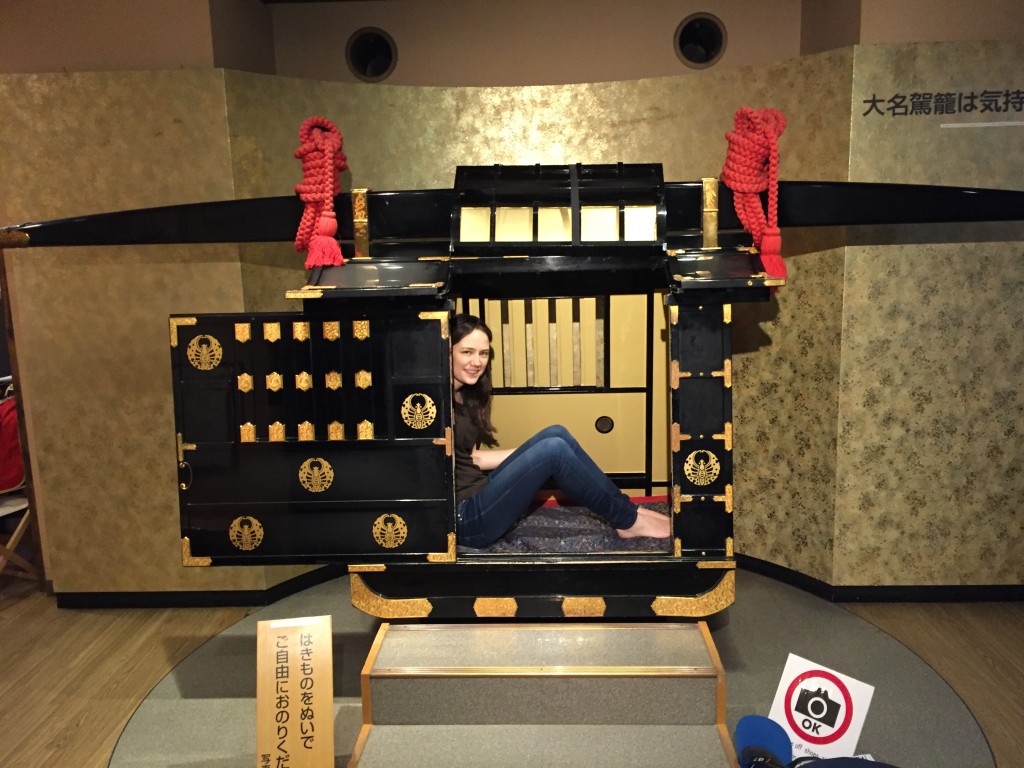
Testing out the Palanquin at Okayama Castle
3. Learn the Story of Momotaro – The Peach Boy
Japanese folktales or mukashibanashi (昔話) are passed down through the generations in Japan and Okayama is the home of one of the most famous folktale heroes of Japan—Momotaro (桃太郎), or the “Peach Boy,” whose story is familiar to everyone in Japan. This Peach Boy has become the symbol of Okayama.
The story of Momotaro dates from the Edo period in Japan (1603-1868), and there are many variations of the story, but one of the most well-known versions is how an old childless woman found a giant peach floating down the river while she was washing clothes. She then brought the peach to her husband and when they opened it, they discovered a boy inside. The boy said he was sent from heaven to be their child. When Momotaro grew up, he decided to defeat the oni (“demons”) that were rampaging the land and the old woman gave him kibi dango (the sweet snack mentioned above) for his journey. Along the way, he met a monkey, a dog and a pheasant to whom he gave kibi dango to in return for helping him defeat the oni. After reaching an island full of ogres, they succeeded in a battle against them and the ogres promised to never be wicked again. They gave Momotaro all of their treasure, and the Peach Boy, the monkey, dog, and pheasant took the treasure back to Momotaro’s house, and they all lived happily ever after.
This story of unification of a people separated by hostility into an effective force for change has resonated for centuries with the Japanese people and Okayama proudly celebrates its local hero. The main boulevard in Okayama leading about 1.5 km down to the Koraku-en and Okayama Castle is known as Momotaro O-Dori, a large statue of Momotaro is directly in front of Okayama station, with several smaller statues of the monkey, dog, and pheasant further along Momotaro street. A smaller Momotaro figurine can be found relaxing on top of the post office box in front of Okayama station and even some of the stone pillars along Momotaro street come complete with spikes meant to resemble demons’ clubs. There are even Momotaro-themed manhole covers and bicycles for rent following on the peach theme. The likeness of Momotaro is also all over tourist brochures and even the tourist information center in the basement of Okayama station is named after the local hero.
Now that you know the story, have fun doing some of your own local Peach Boy spotting in Okayama.
Try your own kibi dango, which are available in its original slightly sweet version or multiple flavors such as strawberry, green tea, brown sugar, and white peach.
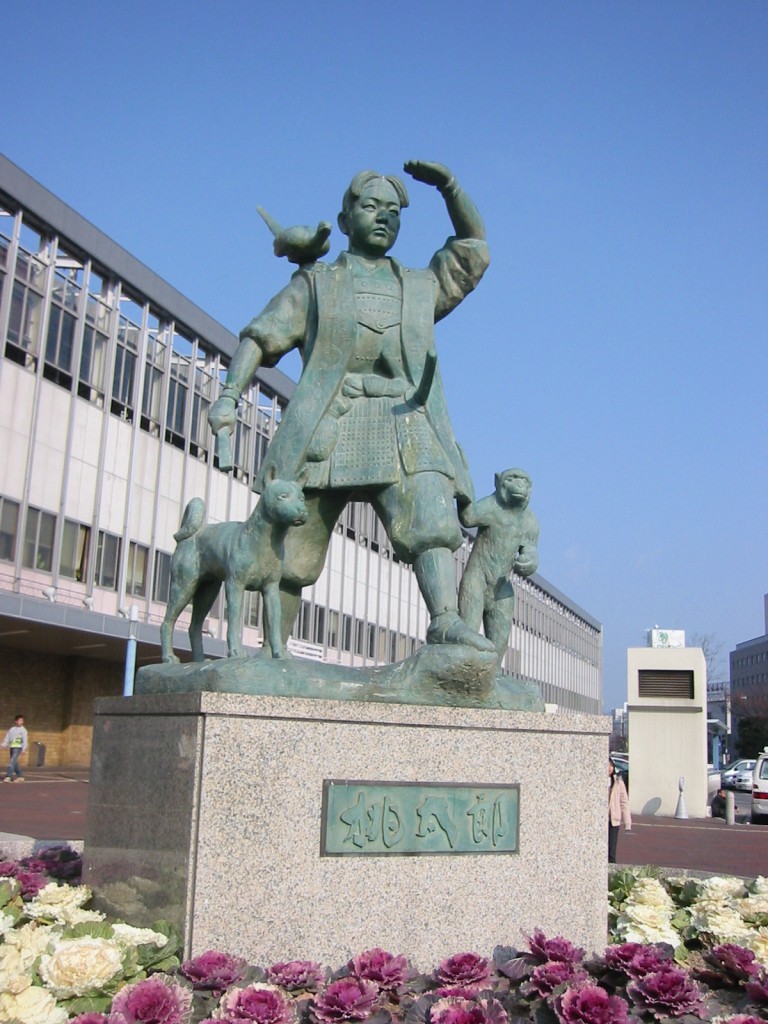
The Momotaro statue outside of Okayama station
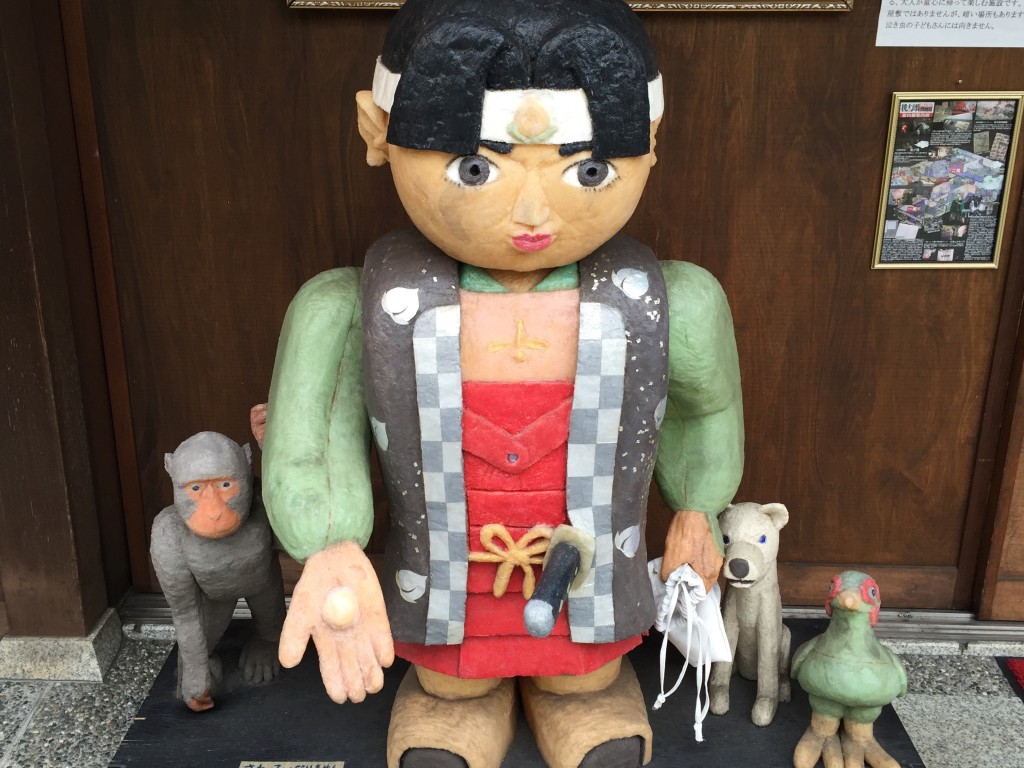
Momotaro and Friends
4. Go Deeper into the Fruit Kingdom
Tired from exploring the gardens of Koraku-en or climbing the Okayama Castle stairs? Then don’t miss out on trying the three most famous fruits of Okayama—white peaches, grapes, and strawberries. Okayama’s mild climate has helped it to cultivate fragrant, high-quality fruits earning it the nickname of the “fruit kingdom.” It is particularly famous for its white peaches, best from late June–late August, its grapes from late April to late November, and its strawberries from December to May.
Like with most things in Japan, fruit cultivation is handled with the utmost care and attention to detail, using techniques developed over the centuries. A number of farms in Okayama open their doors to the public year-round (depending on the fruit) to allow for picking these fruits right from the farm.
For more information in English about visiting on these farms, click here.
If you can’t make it out to a farm, there are also a number of shops in Okayama offering fruit, jams, jellies, or fruit-flavored treats. My personal recommendation would be to go to one of the local cafes specializing in fruit parfaits for a delectable, premium-quality marriage of fruit and ice cream. Some of the best cafes in Okayama include:
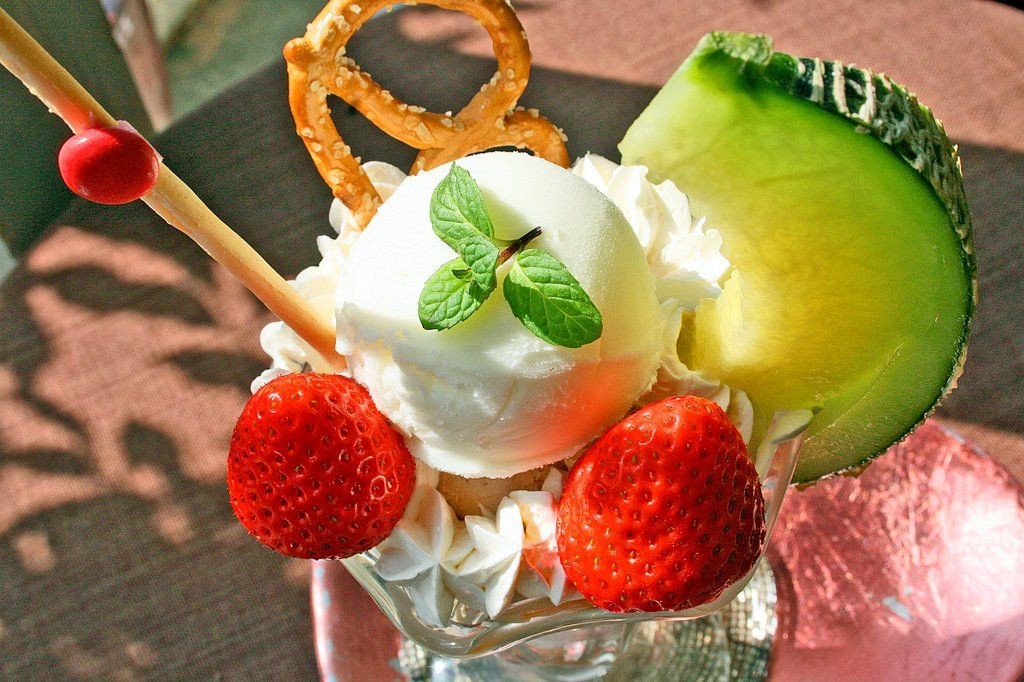
The Izushi Taisho Romance Parfait for JPY1080 from “cafe Antenna” in Okayama (photo courtesy of https://setouchifinder.com/en/detail/561)
café Antenna
Address: 1-8-23 Izushi-cho, Kita ward, Okayama city
Tel: 086-221-9939
Open: 11.00-19.00
Closed: Tuesdays
Access: 7-minutes walk from Okayama Electric Tramway Higashiyama line’s Shiroshita station in the Korakuen garden main entrance direction
Not only does this place serve fabulous parfaits, it also does an excellent Sri Lankan curry (you read that right) and features locally sourced ingredients, interesting artwork, and bizenyaki ceramics made by a local artist.
Fruits-J Temma-Ya
Address: 2-1-1 Omotecho Kita-ku Okayama Okayama, B1F
Tel: 086-231-7673
Open: 10.00-19.30
5. Drunk Men in Loincloths and Dancing Demons? Only at Festivals in Okayama
I didn’t personally get the chance to attend any of Okayama’s festivals but reading about them later makes me excited to get back to this “Sunny Land” (another one of Okayama’s nicknames) as soon as possible.
Okayama’s main festival is the Saidaiji Eyo Hadaka Matsuri, which takes place annually on the 3rd Saturday in February at Kannon-in Temple. “Hadaka” means “naked,” and up to 10,000 usually drunk men clad only in loincloths do battle for sacred wooden sticks (shingi) that get tossed into the air by the temple priests. Warning: a festival participant actually died in 2007, so things can get dangerous.
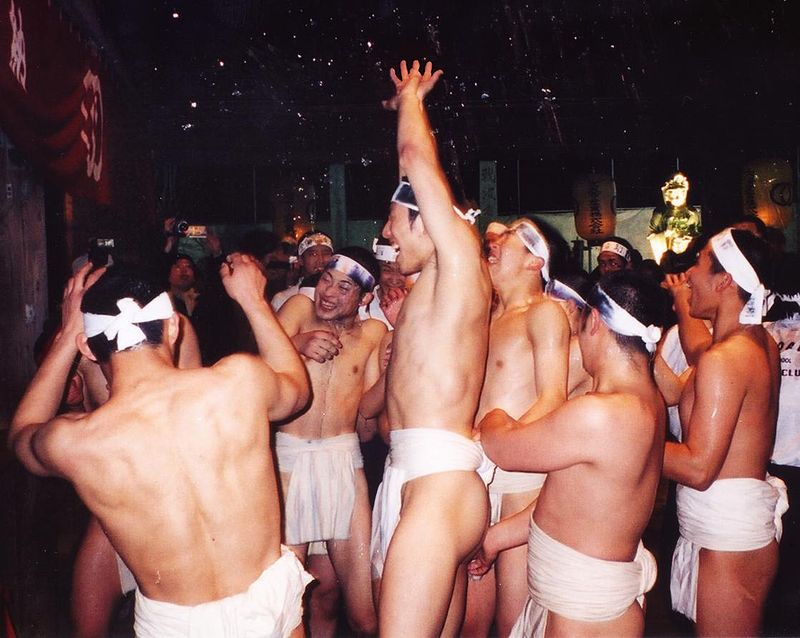
the Hadaka Matsuri every February in Okayama
Picture courtesy of CES – Own work, CC BY-SA 3.0, https://commons.wikimedia.org/w/index.php?curid=1877628
The biggest summer event in Okayama is known as the Uraja Odori festival, held every year from August 1 to 2. Over the two-day festival, teams dressed in a variety of costumes, including ogres and monsters, dance in different locations throughout Okayama City. “Uraja” is based on the ogre “Ura” from another Okayama-based folk tale known as “The Story of Ura.” On August 2, a parade is held and the streets are closed to traffic, making it easy to walk around and enjoy the food stalls and watch the dancers compete. Anyone can participate in dancing in the festival as long as they register. The Uraja Odori provides a perfect place to enjoy the Japanese summer tradition of dancing in traditional costume or wearing a yukata, a traditional kind of casual Japanese kimono made of cotton or synthetic fabric.
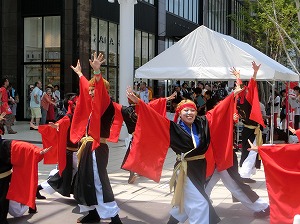
Dancing at the Uraja Odori in Okayama (photo courtesy of http://www.fluffyair.com/crow.html)
I had originally seen Okayama as just a stopping off point on the way to the art island of Naoshima. After spending a couple of days there, however, I realized that the city truly has a lot to offer and its smaller size, compared to larger cities such as Kyoto, Osaka and Hiroshima, provides a welcome break from the main tourist track. On my last day there, a chance encounter also led me to discover a nearby town that became my favorite place on my trip to the Okayama region….Stay tuned!
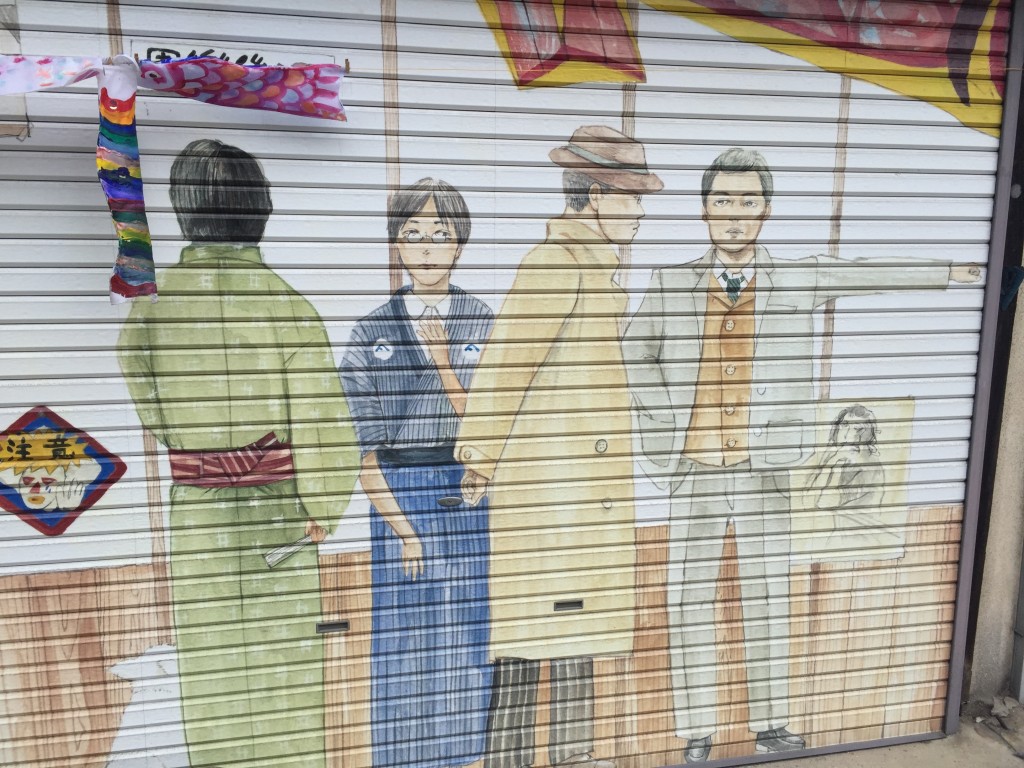
A storefront on my walk to Koraku-en
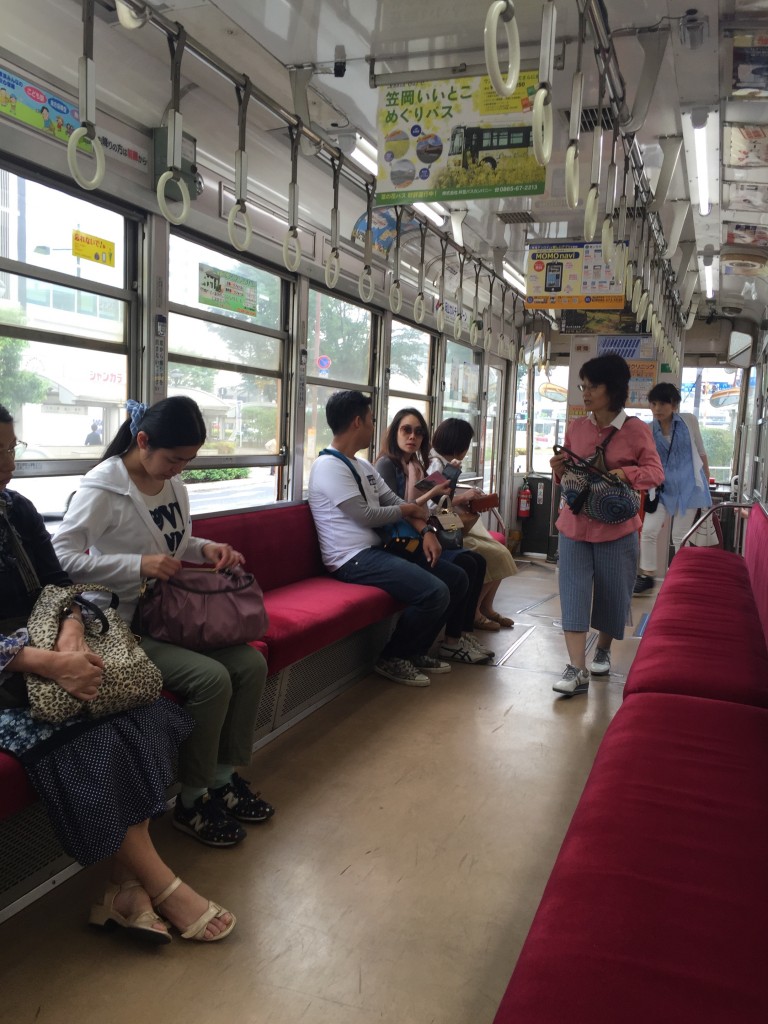
Loved taking a ride for 100 yen on the Okayama Electric Railway to reach Koraku-en – only about a five minute ride from just across from the train station
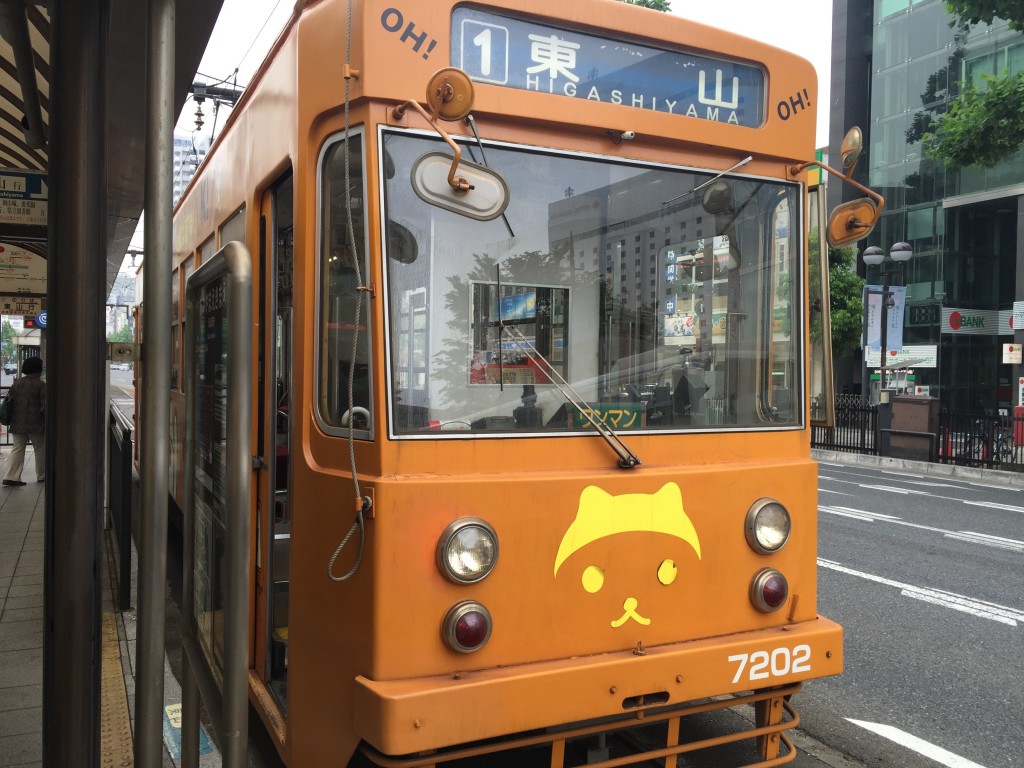
One of the Okayama street cars. Tokyo doesn’t have many of these, so I am always thrilled to ride one.


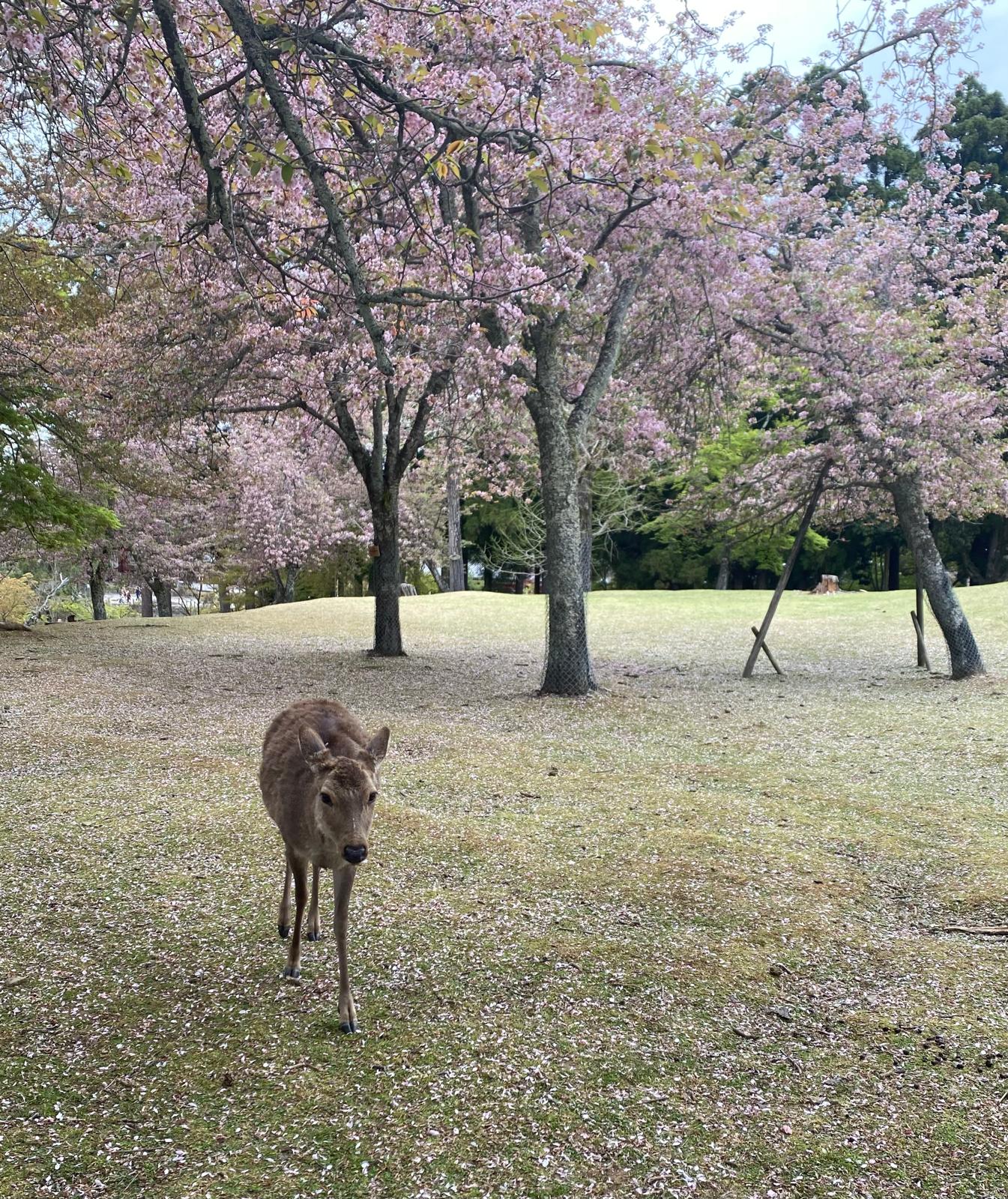
0 Comments